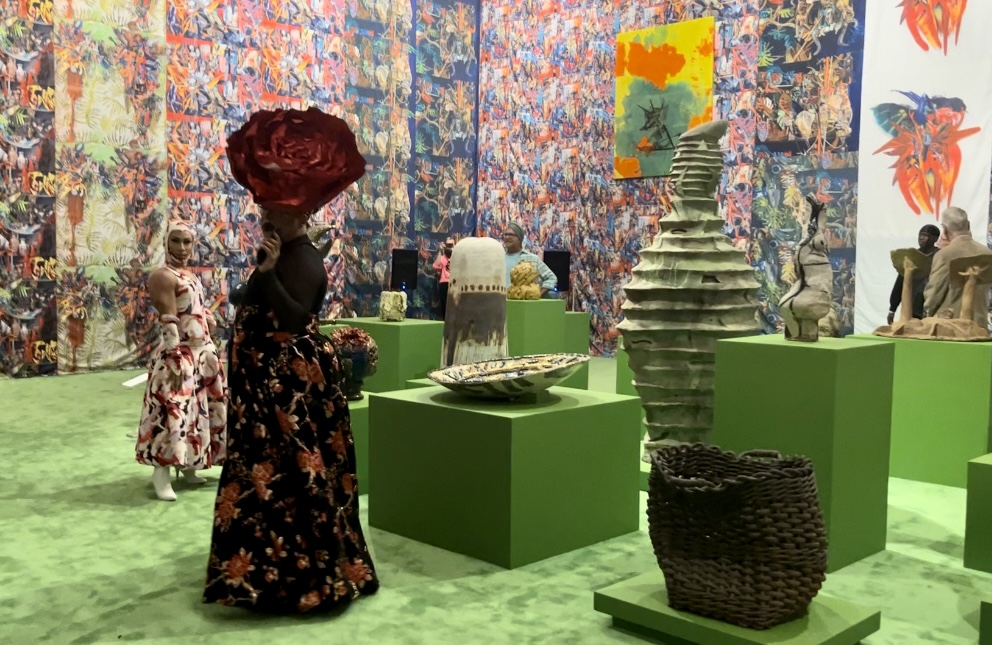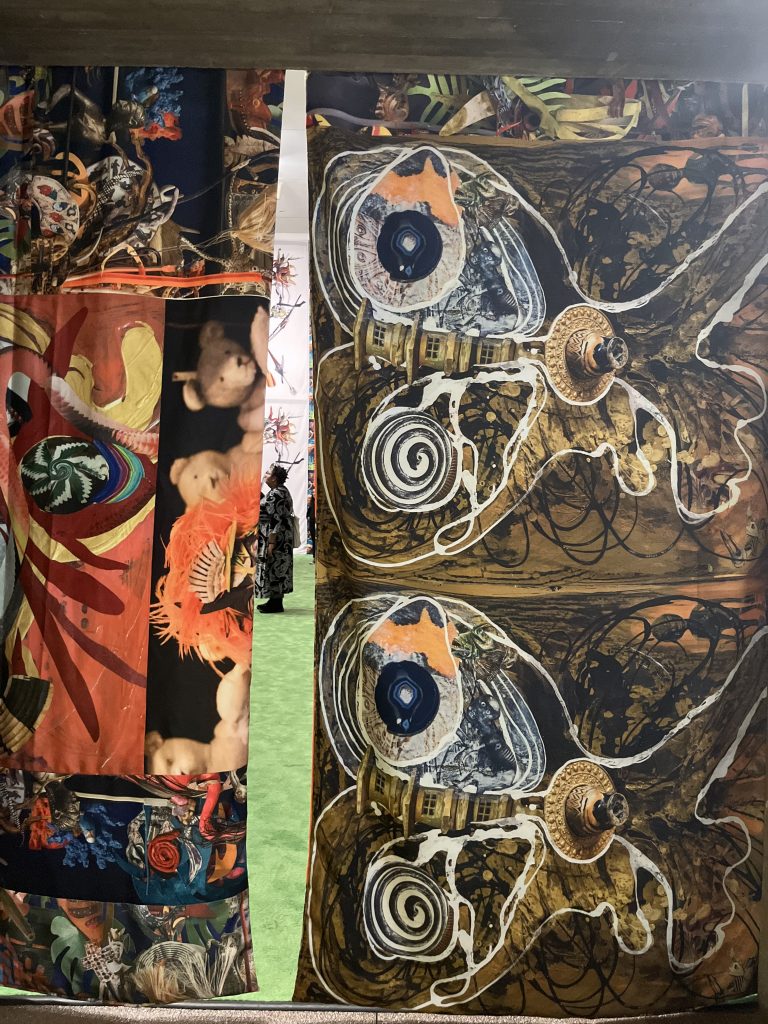Pepe Mar celebrates Queer Mexican roots in “Magic Vessel”
Pepe Mar celebrates Queer Mexican roots in “Magic Vessel”
The Miami-based artist showcases his intersectional identity in an eclectic multimedia exhibit in the Everson.

Mexican artist Pepe Mar unveiled his art exhibition “Magic Vessel” at Syracuse’s Everson Museum of Art on Sept. 30. The exhibit, which runs through the end of December, is a synthesis of his Queer Latine identity.
Upon entering Pepe Mar’s “Magic Vessel,” viewers are immersed in a world wholly abstracted from actuality. While a close eye can reveal roots in our reality, the universe that Mar creates in the vessel of the Everson is, as titled, magical.
In the first gallery room, many pieces line the walls in a traditional gallery format. It’s their subjects that are anything but ordinary.
Mar creates creatures. Some are similar to butterflies or dragonflies, while others seem much more driven by his imaginative presence. Even in their abstract forms, these pieces are predominantly composed of natural forms sculpted into ethereal beings. Tying these otherworldly works to the physical environment showcases a sense of innovation and creativity as a present throughline.

These abstracted forms converge into sculptures in framed glass cases arranged to mimic hung canvas. The pieces themselves are varied, featuring shoelaces and textiles to enamel carafes. Mar establishes a pattern of blurring the line between traditional two-dimensional visual art and three-dimensional sculpture. In doing so, he breathes life into his artwork through unique elements composing a striking visual.
Venturing into the second gallery, Mar only takes this to the umpteenth degree. Entering through a painted, draped canvas cloth, the world outside becomes lost to onlookers. In this space, abstracted expressionist forms are hung in a rolling grid style, covering every inch of the walls with Mar’s replicated prints on fabric.
Materially, the immersive room contains ceramic and clay sculptures, canopy prints, and painted canvases. Leaves and natural morphologies, shapes, and textiles are layered and filtered through the repeated panels. Many of these natural forms are composed of palm trees and other tropical plants, likely referencing both the Miami region and Mexican heritage from which Mar hails.
While there initially seems to be no systemic design to the display, it becomes clear that the duplicate prints are arranged in an almost sequential pattern: brighter portions jump from the replicated backdrop of darker elements.
Where a gallery floor once expanded, a green shag carpet lays. On green pedestals sit sculptures of varying neutral and earth tones. The site-specific installation is titled “Clay Garden.” The ceramic garden curated by Mar features one of his original sculptures and other works from the Everson’s extensive collection.
Some pieces are vibrant on their surface, while others bear curvilinear shapes. The more naturalistic sculptures emulate rocky desert features. The neutral-colored sculptures juxtapose the shag carpet, mimicking a boulder in a grassy plain. Ultimately, this gallery further blurs the line between art and reality.
Mar’s work almost occupies a liminal existence, wherein the eclectic nature and natural motifs unite between sculpture and print. Using natural geographic iconography, Mar connects viewers to his magical realm and the environment within which he settled into his identity.
The canopied second gallery ultimately serves as a timeline of Mar’s work. As an openly Queer man, Mar highlights the ways his sexuality and lived experience has developed his craft. Thinking about his pieces through the lens of identity is a valuable tool for understanding how much of human existence is performative — it is not lost on me that this was likely Mar’s intention.
If that wasn’t already evident, Mar ensured the presence of drag performers in the space at the exhibition’s opening. Here, the queens interpreted his work with Queer performance. The resounding success of drag’s incorporation led the Everson to pioneer a drag-docent program.
The performers, Yuka Liptis and Samantha Vega, not only perform in the space but have been trained to critically engage audiences with the pieces. They move among the viewers after a performance, drawing out curiosity and succinctly connecting the threads of Mar’s work.
With only one of the garden’s sculptures being Mar’s, the docents created a guessing game at the end of their walk. They implored audiences to think about Mar’s work showcased in the first gallery to determine which sculpture is his.
People from all walks of life in the audience were lost in wonder. Smiles lit up faces during performances and the experiential immersion itself. The docents ultimately proved influential in engaging visitors with the art in contemporary ways that cannot be understated.
The presence of queens in the space comes on the heels of anti-drag and anti-LGBTQ legislation worldwide. By including the art form, the Everson takes a formative stance in safeguarding the art form and providing a safe space for LGBTQ people in Syracuse.
Since 2022, the museum has cultivated community through various LGBTQ-specific engagement opportunities. “It’s evident there is a real need for LGBTQ+ community spaces in Syracuse,” engagement coordinator Shari Merten said.
Mar’s exhibit almost feels like a Queer church. In his “Magic Vessel,” lip-syncing drag queens replace choirs, and outside persecution is barred entry behind a haven of art. Much of his work sits at the intersection of his identity as a Queer man and Latine immigrant.
His identity emerges in the sculptured symbolism. By mixing these essential elements of his identity, Mar visualizes intersectionality evocatively, setting the stage for other Queer Latine artists to find their footing.
Pepe Mar’s exhibition “Magic Vessel” is on display at the Everson Art Museum until Dec. 31.
